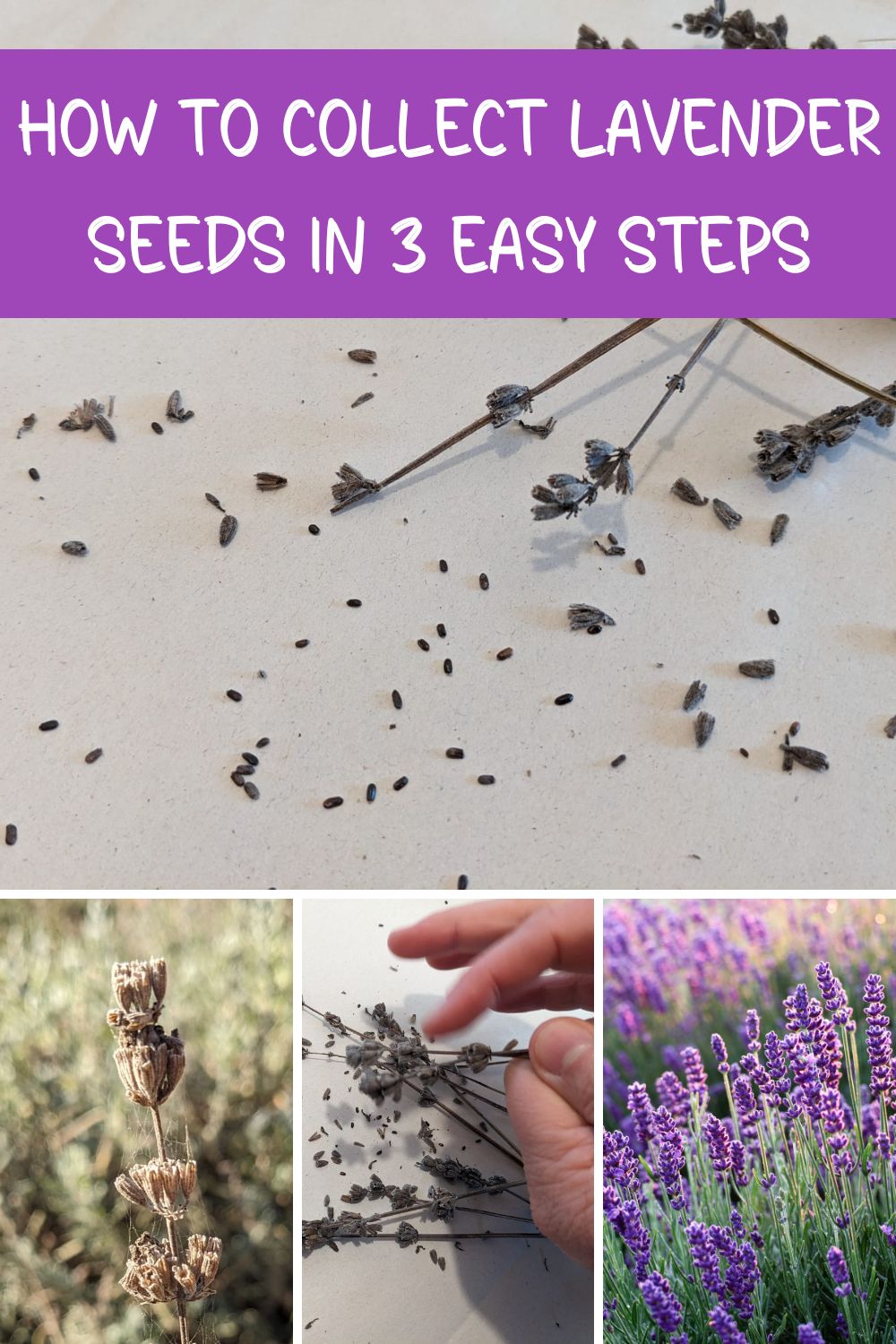While growing lavender from seeds is not the most popular method for propagation, collecting lavender seeds is easy, and if you like a good challenge, you might want to try it. So, here’s how to collect lavender seeds.
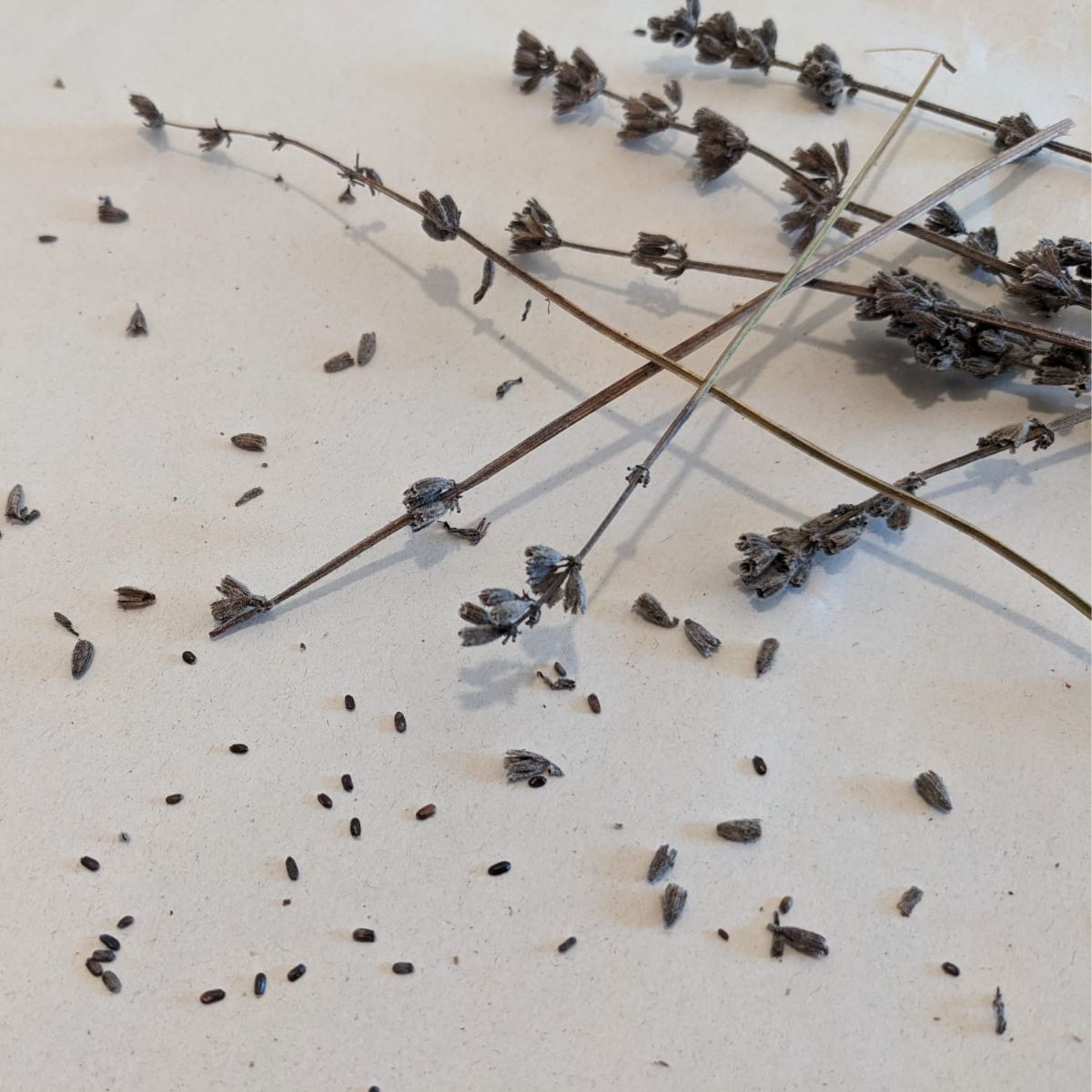
One important thing to note is that not all lavender varieties can be propagated by seed. If you want to propagate a specific type of lavender, growing from seeds may produce a variety you weren’t expecting. Or, in the case of hybrid cultivars, the seeds are not viable, so collecting them is futile.
Of course, if you have English lavender (Lavandula angustifolia) and want to try it, you’ll love this simple lavender seed harvesting guide.
Tools and Materials Needed
Before you begin harvesting your lavender seeds, you’ll need to round up some simple tools for the job. Most of these you’ll likely have in your garden shed already, so don’t worry about having to purchase anything too fancy!
- Pruning shears – a sharp pair of garden scissors will help you quickly trim the seed-containing stems.
- Collection bags or containers – a paper bag works well for gathering the flower stalks, but you can also use a bucket or bowl. You’ll also need a container to store collected seeds: an envelope or a plastic bag works well.
- Gloves (optional) – lastly, grab yourself a pair of gloves! Wearing gloves while working in the garden protects your skin from any harmful germs you may encounter, and it also keeps your hands clean!
What is The Best Time to Harvest Lavender Seeds
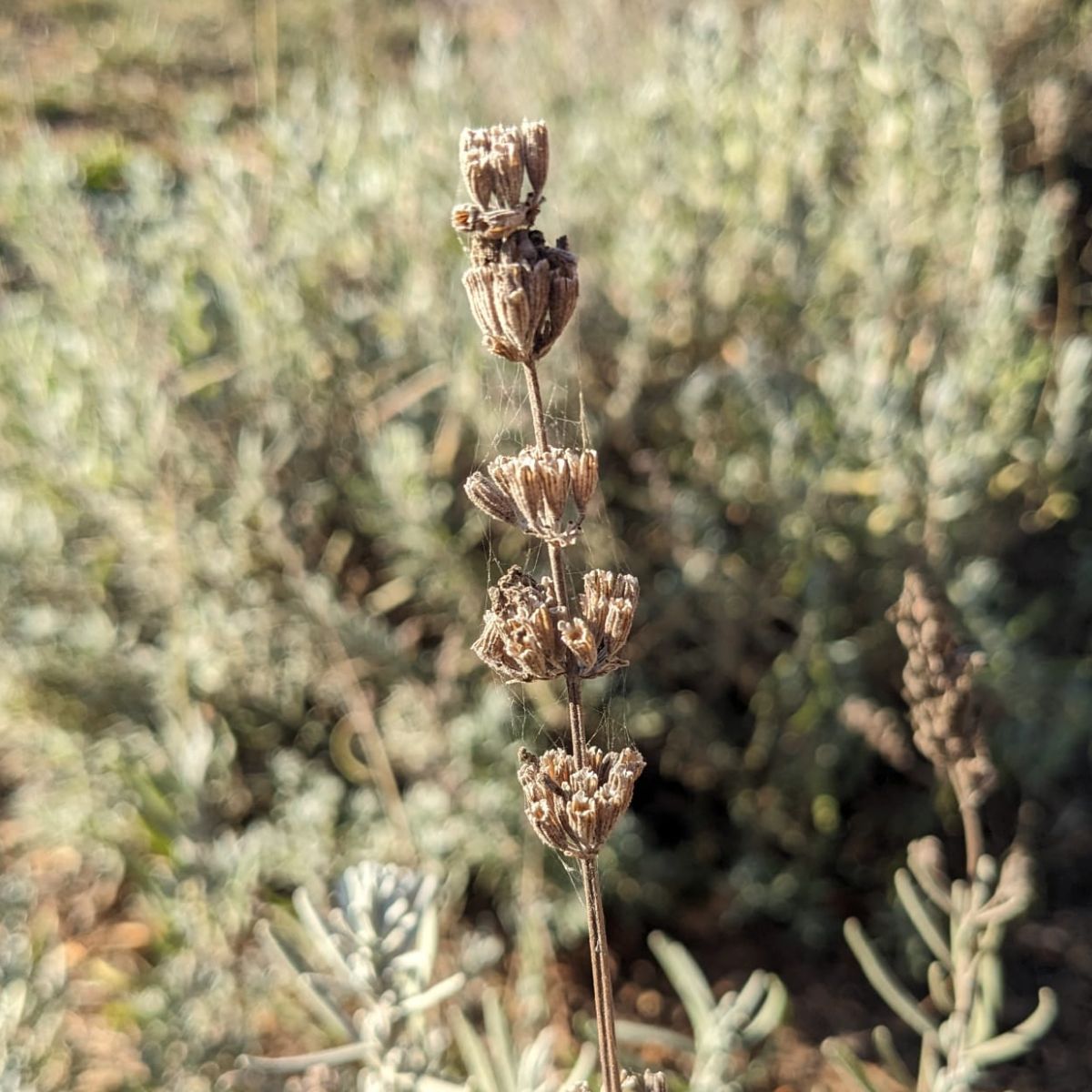
The best time to collect lavender seeds is in the fall, once the growing season has ended and the flowers fade, allowing the seedpods to form (when harvesting your lavender, leave a few flower stalks if you plan to collect seeds).
How To Collect Lavender Seeds: A Step-by-Step Guide

Collecting lavender seeds couldn’t be easier:
- Locate the seed pods – the seed pods will appear when the beautiful purple flowers fade. You’ll know the seeds are ready to harvest once the lavender flowers have turned gray and dried. If unsure, give the plant a shake; you’ll see seeds fly out when ready.
- Cut the branches holding the seed heads – snip the branches containing the seeds and place them inside your collection bucket.
- Extract seeds from the pods – either place them in a paper bag and shake them around to dislodge them or rub the seed heads between your fingers over a bowl to get the seeds out.
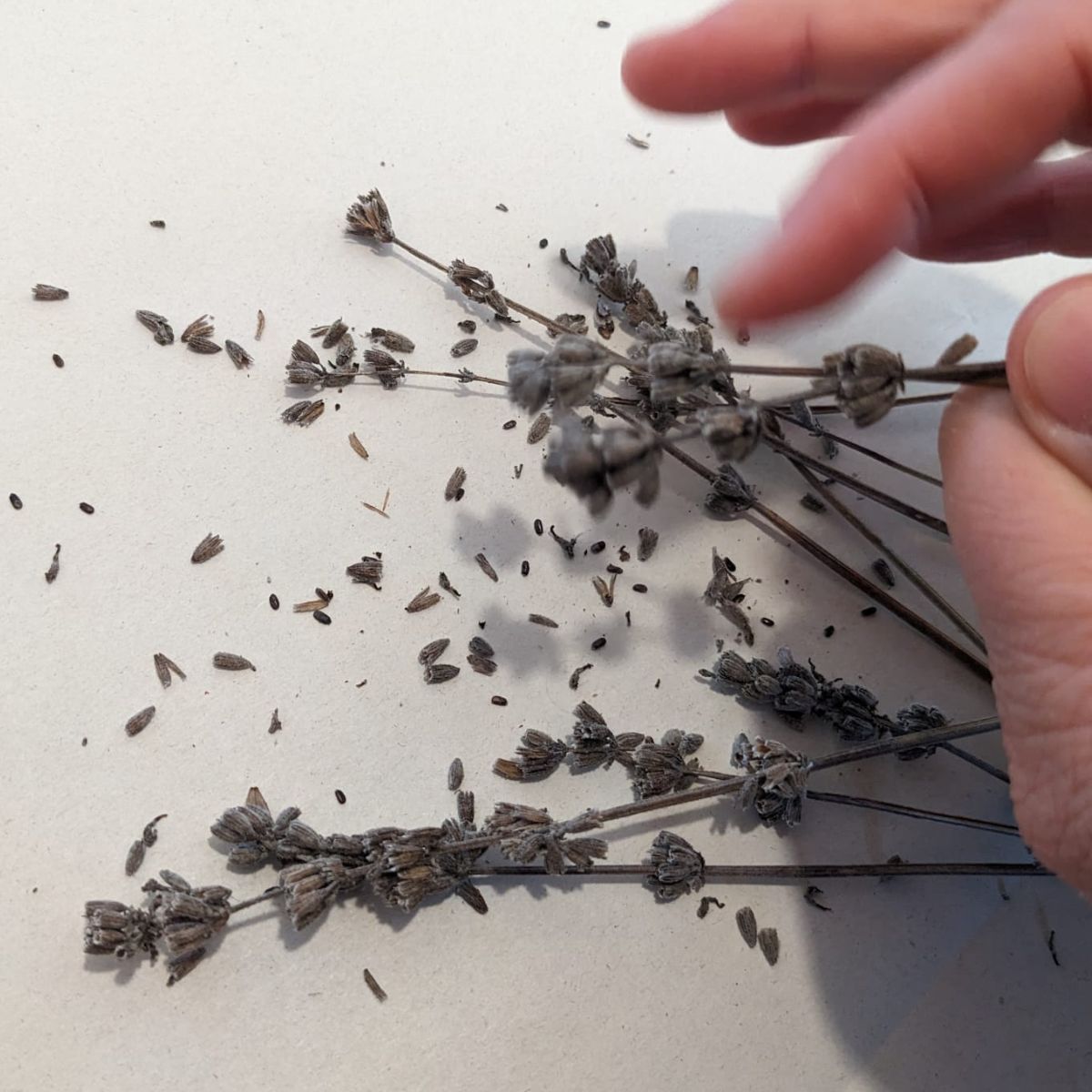
How to Store Lavender Seeds
Store them in a dry, airtight container and avoid sunlight.
- First, ensure they’ve completely dried out before you store them. This ensures that moisture doesn’t damage them.
- Next, find a suitable container: a plastic container, paper bag, or small envelope will do the trick.
- To germinate, lavender seeds need to spend some time in the fridge (at least 30 days). This is called cold stratification and is a natural process where seeds imitate the dormancy period seeds experience in the wild during winter.
Lavender seeds have a notoriously low germination rate. It takes two weeks to a month to sprout, so if you want to plant them, you’ll need to be patient!
Where to Buy Lavender Seeds
If you don’t have a plant to collect seeds from, you can buy a packet in the spring from your local nursery. Or, if you’d rather get them now, you can find them online here:
If you’re looking for Grosso lavender seeds, you’re unfortunately out of luck because it’s a hybrid and sterile, so it doesn’t produce seeds. Get a Grosso lavender plant here.
Learn More About Growing Lavender
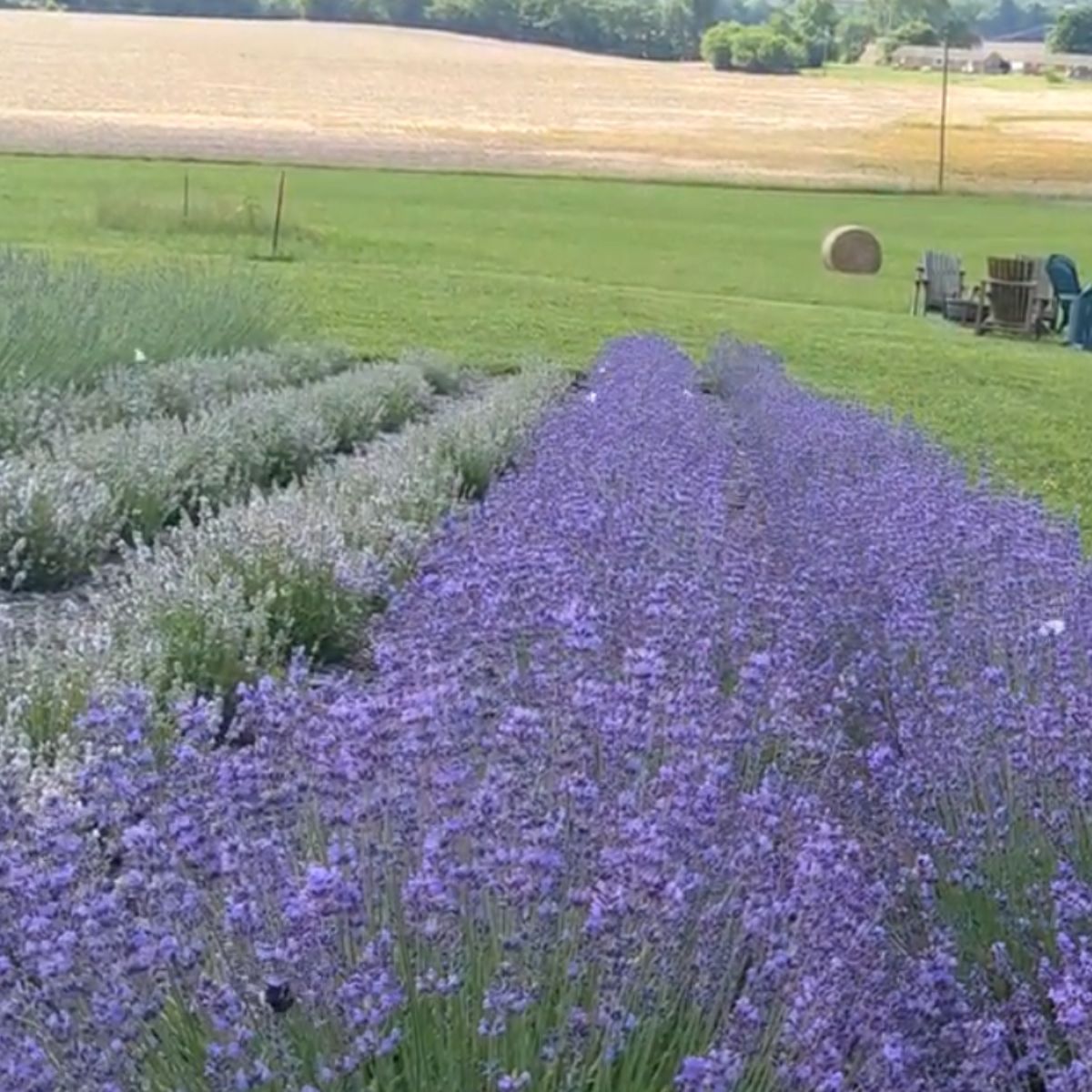
- How to Grow Lavender for Fun and Profit: Lessons Learned from Planting Three Hundred Lavender Plants – this is a book I wrote from my own experience planting a lavender farm in my front yard
- how to grow lavender from seed
- how to make money from growing lavender in your garden
- how to save a dying lavender plant
- different colors of lavender flowers
- how to keep lavender from getting woody
- tips for growing French lavender
- guide to growing Spanish lavender
- how to prune lavender
- culinary lavender varieties
FAQs
What do lavender seeds look like?
Lavender seeds are tiny, usually around 1-2 millimeters in size, dark brown to black, and have an oval or teardrop shape.
Can I throw lavender seeds directly on the ground?
You can, but you may not have a good germination rate, as lavender needs warmth and light to sprout, and outdoor weather in the spring can be unpredictable.
Does lavender reseed itself?
Yes, lavender can self-sow in the right environment, but it’s rare.
What can you do with dried lavender flowers?
Dried lavender buds make bath products (soaps, scrubs, salts), scented lavender sachets, aromatic potpourri, wands, lotions, salves, and sleep pillows. Buy a copper still and make lavender essential oil. If you have any edible lavenders, you can use them in herbal tea mixtures (chamomile, thyme, and sage are great additions), baking, and making lavender honey and lavender lemonade.
